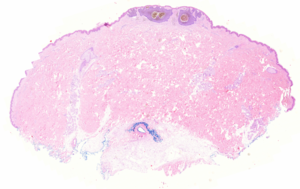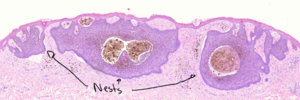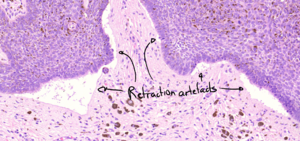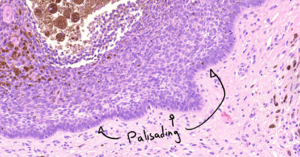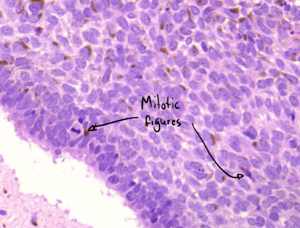44. Basal cell carcinoma
Staining: HE
Organ: Skin
Description:
The tumor forms nests of tumor cells in the dermis.
The tumor cells on the periphery of the nests line up in a special way. This phenomenon is called palisading.
Around the tumor nests small artefacts form. These retraction artefacts are due to the fixation and staining process of the sample, but it only occurs in basal cell carcinoma samples and is therefore characteristic for it.
The tumor cells show atypia. Mitotic figures are present.
Diagnosis: Basal cell carcinoma
Causes:
- Sun exposure
Theory:
Basal cell carcinomas can contain melanin. The tumor may therefore be mistaken for melanoma.
The blue ink on the bottom is probably used to mark the surgical margin.
